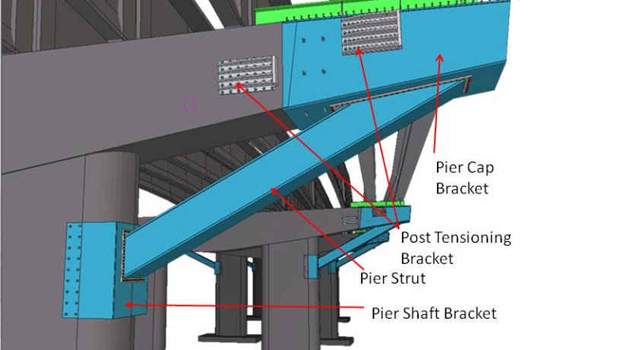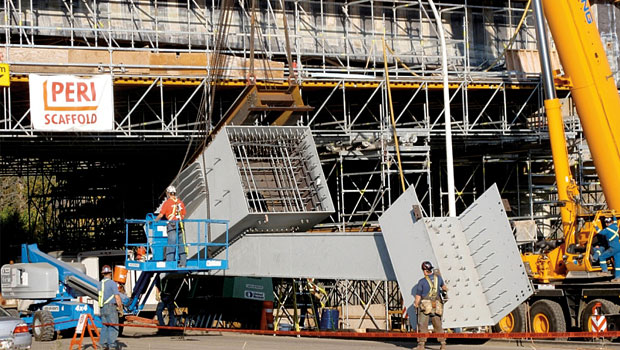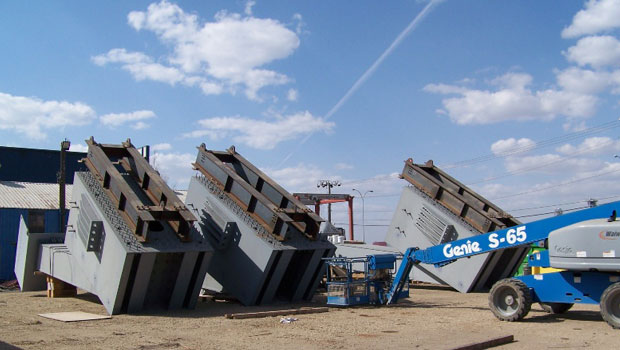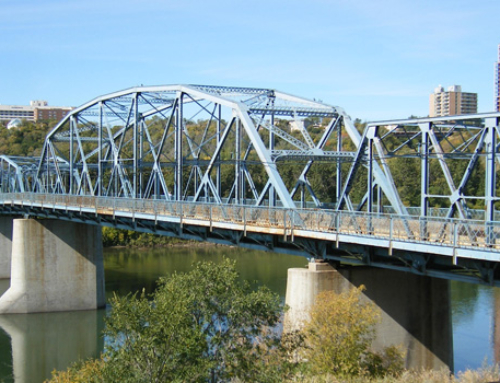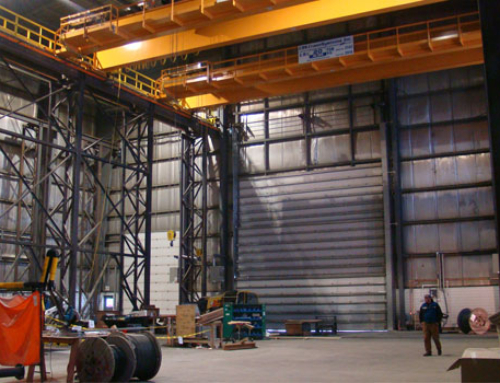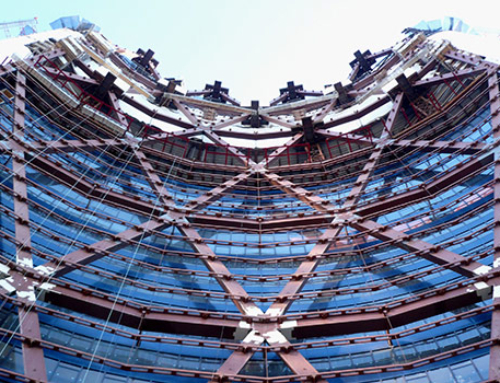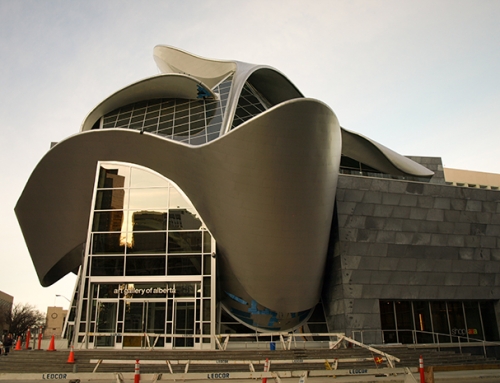Project Description
Steel pier cap extensions were ideal solution for bridge widening
The Quesnell Bridge is located on Edmonton’s busiest traffic corridor, the Whitemud Freeway, with volumes of more than 120,000 vehicles per day. When this section of the freeway needed widening, rerouting that traffic onto a detour was not an option. This presented a particular challenge with respect to widening the bridge.
“We needed to design a system that would be cost effective, feasible and involve minimum construction time while allowing traffic to continue to flow,” says Gary Kriviak, Principal Project Consultant with CH2M HILL Canada Limited, prime consultants to the City of Edmonton on the project.
Early analysis determined that there was some reserve capacity for additional weight on the existing piers and foundations, indicating that pier cap extensions were a feasible approach for supporting a widened bridge deck. A more conventional pier widening scheme would require construction from the foundation level up.
“This approach would allow us to widen the bridge without going down into the river channel, which would have been a significant undertaking given today’s strict environmental requirements as well as other risk factors,” Kriviak says. “There would be habitat disturbance considerations, navigation constraints, seasonal and in-channel access constraints, fluctuating water levels to deal with – all of which would have almost certainly resulted in higher cost and a potentially longer construction schedule.”
Extending the pier caps was not without technical design and installation challenges. Selecting structural steel as a primary component of the extensions turned out to be a key factor in addressing the challenges, Kriviak says. “Selective use of steel was key in meeting a fundamental requirement of this project. Concrete extensions would have led to excessive additional weight on the structure. Also, placement of major concrete formwork above the river would have been a difficult process and might have resulted in the complicating requirement of temporary impact on the river channel.”
Ten steel cap extensions were designed, two for each of the five piers. Each extension consisted of a compartmentalized pier cap top element, an inclined strut and a pier shaft bracket connection – all fabricated from steel to minimize weight while meeting geometric, stiffness and strength requirements.
One of the challenges of using this extension system was its connection to the existing concrete piers. Connection of the struts to the pier shafts was accomplished using steel strut end brackets anchored to the existing concrete with a group of steel tie rods grouted into cored holes. External steel post-tensioning rods were used to connect the top cap element to the existing concrete pier cap, to hold it in place and transfer load back to the concrete.
“This connection system was a fundamental element in making the extension system workable,” says David Wei, design engineer on the project. “Making steel components work together with concrete in this kind of application is a challenge. This was a unique method that is not frequently used.”
When completed, each pier cap extension was a composite structure, with a hollow central compartment, and with peripheral compartments filled with concrete to enhance strength. An interface layer of new concrete between the steel extensions and the existing concrete piers was also used. Off site fabrication of the steel cap extensions allowed for related construction activities to occur in parallel and permitted relatively quick extension installation upon delivery to the site.
Project Team
Owner: The City of Edmonton
Structural Engineer: CH2M HILL Canada Limited
Fabricator: Waiward Steel Fabricators Ltd.
Detailer: M & D Drafting Ltd.
Erector: Waiward Steel Fabricators Ltd.

